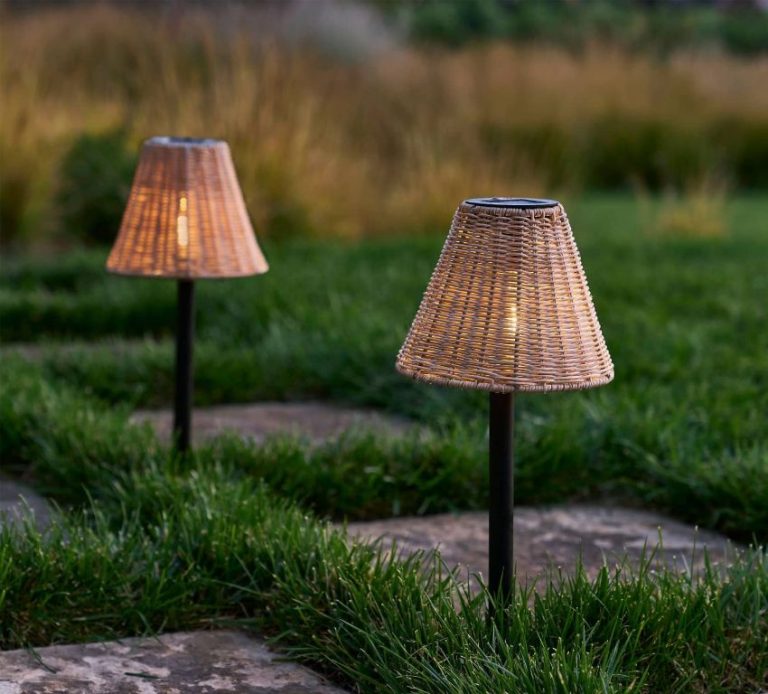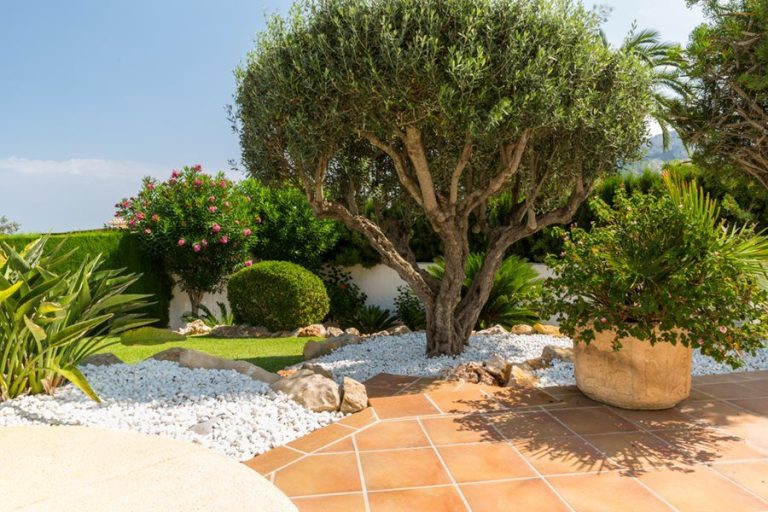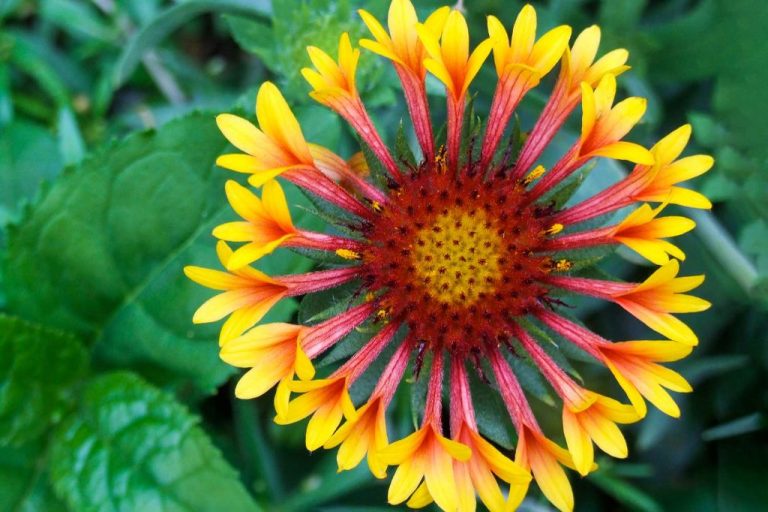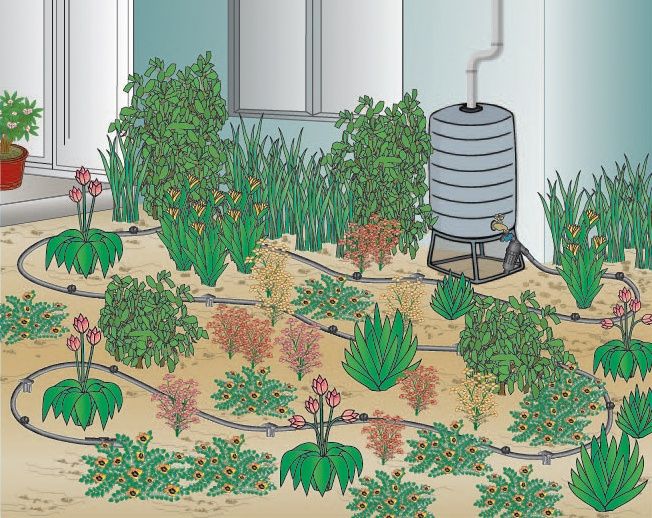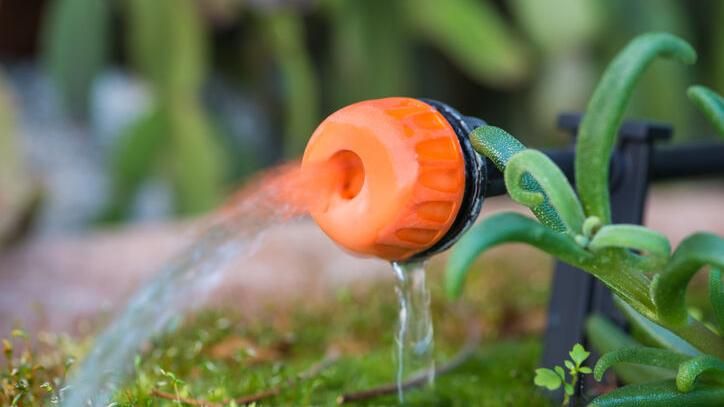Desert Landscape Design: Embracing Arid Beauty
Designing landscapes for arid climates like the desert requires embracing the unique beauty and challenges of these environments. With less rainfall, intense sun exposure, and temperature extremes, desert areas require drought-tolerant plants and efficient irrigation to thrive (Think Green AZ). The key is working with, not against, the climate. Xeriscaping principles emphasize water conservation through seven steps: planning and design, soil analysis, practical turf areas, efficient irrigation, appropriate plant selection, mulching, and appropriate maintenance (Introduction to Desert Landscape Conservation Planning). By following these guidelines, desert landscapes can provide natural beauty, sustainability, and sanctuary for humans and wildlife.
Choosing Drought-Resistant Plants
When designing a desert landscape, it’s crucial to select plants that can withstand hot, dry conditions. Focus on using native species that have adapted to thrive in arid environments over thousands of years. Many of the best options are succulents, cacti, and agaves.
Some excellent native desert plants to consider include:
– Ocotillo (Fouquieria splendens), a striking tall plant with long, spiny stems and vibrant red flowers in spring. Ocotillo is native to the Sonoran and Chihuahuan deserts [1].
– Barrel cactus (Ferocactus species), round-shaped succulents with hardy spines and bright flowers in summer. Great for adding unique shapes to the landscape [2].
– Red yucca (Hesperaloe parviflora), an agave relative with arching yellow flowers on tall spikes above grass-like foliage. Does well in full sun and needs little water once established.
Other excellent options include prickly pear, beavertail cactus, desert spoon, and agave species like Parry’s agave. Mix heights, textures, and forms for visual interest. Group plants with similar needs together.
Hardscaping Materials
When designing a desert landscape, the materials used for paths, patios, walls and other hardscaping elements are crucial for both aesthetics and functionality. Natural materials like rock, gravel and stone are not only suitable for the arid environment but provide an organic look and feel. Concrete and travertine are two excellent heat-resistant and durable options.
Using native rock or stone found in the local area creates a seamless transition from the natural landscape. Materials like sandstone, granite and limestone withstand the elements while offering neutral colors that blend with desert plants. Laying pea gravel or crushed granite along pathways and sitting areas is an affordable way to achieve a textured, Southwestern look. Opting for larger rocks and boulders adds sculptural interest.
For more formal spaces like patios, travertine is an upscale yet classic choice, with its subtly rustic appearance and earthy hues of tan, brown and rust-red. Its porous nature also helps with drainage. Concrete is similarly long-lasting, available in varied textures and can be stained or stamped for visual appeal. Both absorb daytime heat but stay cooler than synthetic materials at night, reducing temperature swings. Proper drainage, adequate shade and wind barriers should be integrated to maximize comfort.
When thoughtfully designed with natural, climate-appropriate elements, a desert landscape’s hardscaping provides an inviting space to enjoy the region’s distinctive beauty.
Mulch and Groundcovers
Groundcovers and mulch are vital components of desert landscaping to help retain moisture and prevent evaporation in the hot climate. Instead of grass, opt for rugged, low-maintenance groundcovers that thrive in arid conditions. Popular choices include damianita, ice plants, lantanas, and creeping thyme which require little water once established.
Mulch helps reduce water needs by maintaining soil moisture and preventing weed growth. Organic mulches like wood chips or bark break down over time to enrich the soil. Inorganic options such as gravel, decomposed granite and crushed stones create a decorative, natural look while regulating temperature. A 2-3 inch layer of mulch conserves moisture and cools plant roots during the intense heat of summer.
Sand and inorganic mulches may seem counterintuitive for retaining moisture. However, they protect soil from drying winds and direct sun exposure. For variety, combine gravel or decomposed granite with patches of desert-friendly plants.
Irrigation and Drainage
Desert landscapes require careful irrigation techniques to avoid wasting water and promote plant health. Drip irrigation systems are ideal for delivering the precise amount of moisture to roots while avoiding evaporation. According to Landscaping Network, drip systems should consist of durable tubing with emitters spaced 12 inches apart. The tubing is placed on soil surfaces or buried 2-4 inches underground.
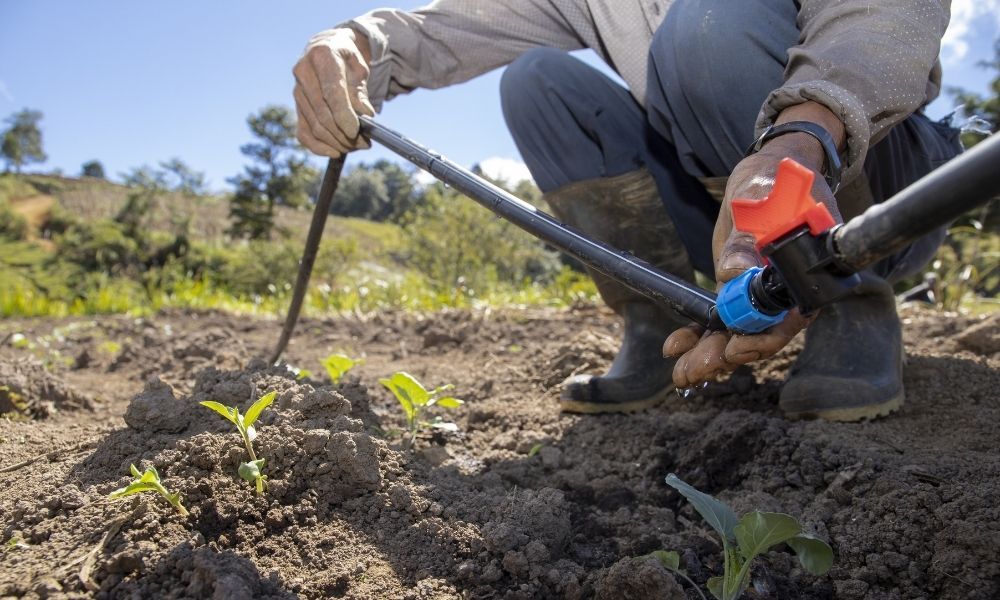
Rainwater harvesting is another sustainable approach in arid environments. Rain barrels or cisterns capture rain to store for future irrigation needs. Dry streambeds lined with river rocks can serve as drainage channels during storms while adding aesthetic interest.
Providing Shade
Creating shade is crucial for making outdoor spaces usable and comfortable in desert climates. Some ways to incorporate shade into desert landscape design include:
- Ramadas or shade structures – Free-standing structures like pergolas, pavilions, and gazebos provide excellent direct shade. They can be built with various materials like wood, metal, or fabric. Position ramadas strategically over seating areas, play areas, or pools.
- Trees – Carefully selecting and planting trees in the right spots casts shade over the landscape. Some desert-friendly shade trees include mesquite, palo verde, desert willow, and olive trees. Give trees plenty of space to grow and situate them to shade the house, patio, or walkways. Look for low-water native tree varieties. https://thinkgreenaz.com/maximizing-shade-in-your-arizona-desert-landscape-design/
- Sun sails – Fabric sun sails mounted on poles efficiently block sunlight while allowing airflow. They can be installed over specific areas and adjusted to follow the sun’s path. Sun sails provide UV protection and can reduce temperatures by up to 35 degrees Fahrenheit.
Thoughtful shade elements guard against the harsh desert sun and make outdoor living more enjoyable. Position shade where it’s most needed during the hottest times of day. The relief offered from intense sunlight creates hospitable microclimates for people, plants, and wildlife.
Embracing the Aesthetic
The natural beauty of the desert landscape is defined by its distinctive forms and earthy color palette. Embracing these elements in your design creates an authentic desert aesthetic. Using natural rock formations, undulating berms, and native plants with spiky leaves or bulbous shapes reflects the unique contours of the desert (https://www.pinterest.com/chuna03/desert-landscape). Earth tone colors like tans, browns, rusty reds, and pale greens connect the landscape to the surrounding environment.
Highlight these natural forms by using gravel or decomposed granite pathways that curve gently around plant beds and rock features. Choose weathered materials like stone, adobe, or wood to construct walls, steps, benches, and other hardscaping elements. This creates a cohesive look and celebrates the elegant simplicity of the desert landscape (https://www.houzz.com/photos/desert-landscaping-ideas-phbr1-bp~t_728~a_34-20598). Be sure to incorporate accent colors through succulents, wildflowers, pots, and garden art for visual interest.
Embracing the arid beauty of the desert in this way creates an inviting, peaceful outdoor space that connects with the surrounding environment. Lean into the distinctive natural forms and earth tones that define desert style to highlight the subtle beauty of this landscape.
Sustainability
Creating a sustainable desert landscape involves embracing xeriscape principles and eco-friendly practices. Xeriscaping focuses on using drought-tolerant native plants, efficient irrigation, and thoughtful design to reduce water usage (https://wateruseitwisely.com/blog/sustainable-gardening-in-the-desert-ten-easy-tips/). Choosing low-water-use plants like cacti, succulents, agaves, and native wildflowers and grasses is key. Grouping plants with similar water needs together in hydrozones simplifies irrigation. Using drip irrigation, embracing mulch to retain moisture, and irrigating efficiently prevents waste.
Beyond xeriscaping, there are many eco-friendly practices that can be incorporated. Installing rainwater harvesting barrels, graywater systems, or bioswales manages water sustainably. Composting yard waste reduces landfill contributions. Supporting local native plant nurseries and salvaging materials keeps the carbon footprint low. Avoiding pesticides and excessive fertilizers protects ecosystems. Focusing on natural pest control and attracting pollinators boosts biodiversity.
With mindful plant selection, resourceful systems, and eco-conscious care, desert gardeners can create sustainable landscapes that thrive on little water and embody environmental stewardship.
Maintenance
While desert landscapes require less maintenance than traditional gardens, some pruning, weeding, and watering may be needed to keep plants healthy. It’s recommended to do light pruning during dormant winter months to remove any dead branches or shape plants as needed. Spending 10-15 minutes each month hand pulling weeds will also help prevent unwanted plants from invading (How to Maintain Desert Landscapes).
Occasional deep watering once every 2-4 weeks during the hottest, driest months will replenish moisture levels for desert plants. Aim for infrequent but deep soakings to encourage deep root growth. Make sure not to overwater, as too much moisture can be damaging in arid climates (Caring for Your Desert Landscape). Proper maintenance techniques will keep landscapes thriving while retaining their natural desert beauty.
Bringing the Desert Indoors
The beauty of the desert landscape and aesthetic can be brought inside the home through thoughtful interior design. Using natural materials like wood, stone, clay and fibers in furnishings and finishes connects the indoors with the outdoors. Warm desert hues in paint colors, textiles and accessories evoke the colors of the desert environment. Floor to ceiling windows, doors that open to patios, and indoor/outdoor living spaces further bridge the connection between interior rooms and exterior desert vistas.
Wood beams, stone accent walls and clay tile floors bring organic desert textures indoors. Furnishings and decor in natural fibers and wood add warmth. Punctuating with cacti, succulents and artefacts celebrating desert flora and fauna enhances the theme. Paint colors in warm neutrals like sand, terracotta and sage green reflect the desert palette. Fabrics in earthy stripes, tribal patterns and cow hide prints complement the natural vibe. Wrought iron, rattan and bamboo are fitting furnishing materials.
By thoughtfully bringing the colors, materials and textures of the desert into interior spaces, you can create a cohesive indoor/outdoor flow that fully embraces the arid beauty of the landscape. The indoors and outdoors harmonize as one desert oasis.


